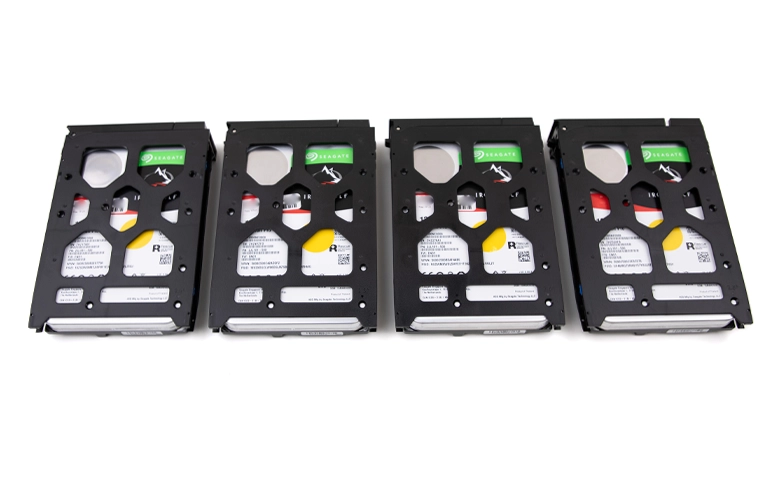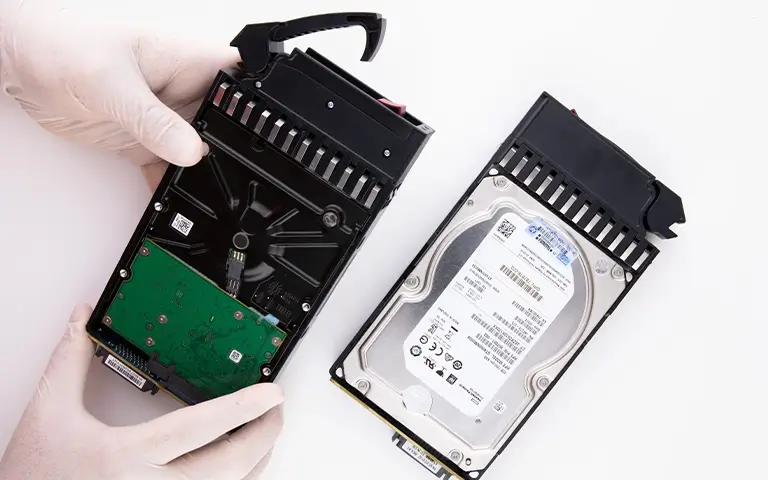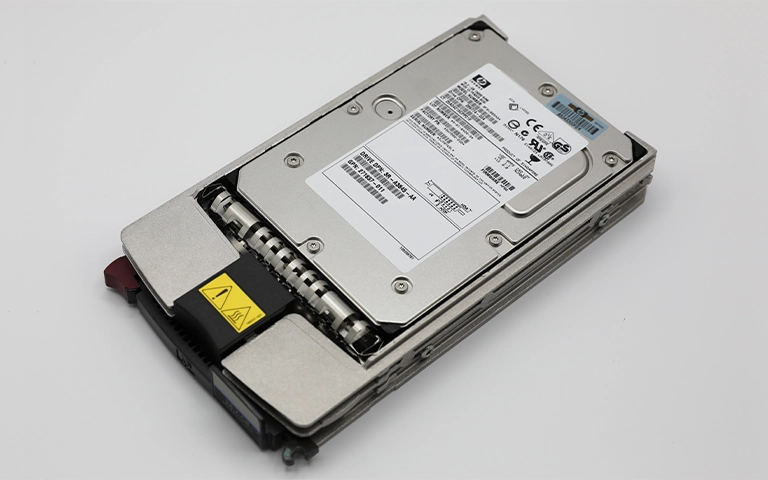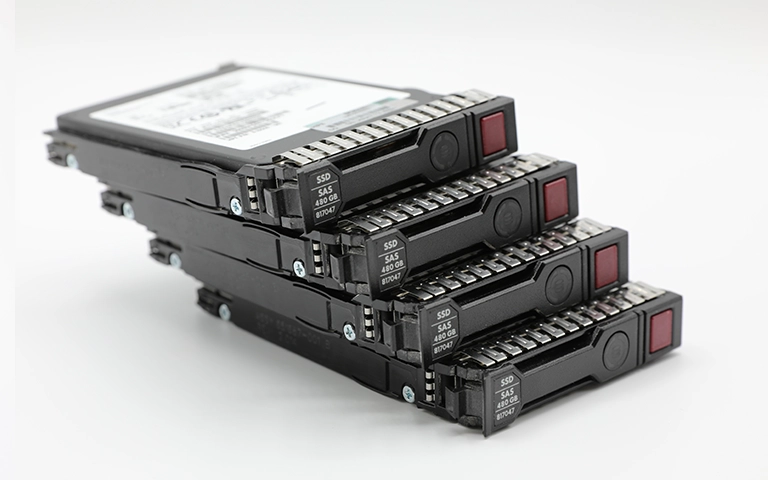If you have ever tried to build or manage a storage platform, you have probably had to decide whether to prioritise raw speed or data protection. That is where RAID 0 vs RAID 1 becomes a critical choice. At first glance, these configurations seem similar, but in reality they behave very differently.
Selecting the right RAID level can be the difference between fast, responsive systems and a incident that results in permanent data loss.
In this guide, you will see how RAID 0 and RAID 1 work, how each one stores and protects your data, and which configuration is better suited to your business or personal storage environment.

Why Choosing Between RAID 0 and RAID 1 Matters
When you design a storage environment, one of the first trade offs you face is between outright speed and data safety. RAID 0 and RAID 1 are among the most common configurations, but they are built for very different outcomes.
RAID 0 is geared towards performance, delivering higher read and write speeds by spreading data across multiple drives and presenting them as a single volume.
RAID 1 is focused on resilience, mirroring your data across drives so that an individual disk failure does not immediately result in data loss.
Grasping these differences is essential if you want a setup that balances efficiency, cost and reliability. This article walks through how each RAID level works, where they are most effective, and the key factors to weigh up before you make your decision.
Understanding RAID 0: Performance Without Redundancy
RAID 0, often called striping, combines two or more hard drives into a single logical volume. It splits data into blocks and writes them across all drives at the same time.
This approach boosts read and write speeds, which makes it suitable for workloads that demand rapid data access, such as gaming, video editing or handling temporary working files.
The trade off is significant: RAID 0 offers no redundancy.
If a single drive in the array fails, all data is lost, because fragments of each file are distributed across multiple disks.
For scenarios where performance is the priority and data can be recreated or is non critical, understanding RAID 0 configuration and monitoring is essential for stable day to day operation.

Understanding RAID 1: Redundancy and Reliability
RAID 1, often referred to as mirroring, is designed around data protection rather than raw speed. In this configuration, every piece of data is written to two or more drives at the same time.
If one drive fails, another still holds an identical copy, so you can carry on working without immediate data loss.
This makes RAID 1 well suited to systems that hold important or sensitive information, such as servers, business databases and critical workstation storage.
While it does not increase total capacity or deliver a major performance boost, its reliability makes it a common choice where uptime and data integrity are non negotiable.
You can learn more about how mirroring operates in a RAID 1 configuration by exploring our article on RAID 1 setup and behaviour.

RAID 0 vs RAID 1: Key Differences
RAID 0 and RAID 1 sit at opposite ends of the storage spectrum. RAID 0 is all about performance, while RAID 1 is designed to protect your data. The right choice depends on whether you prioritise speed or redundancy in your environment.
For a wider look at how these options compare with other setups, you can read about the types of RAID configurations used across different industries in our article.
Which RAID Setup Fits Your Needs?
The right RAID configuration depends on what matters most in your environment, whether that is speed or data safety.
Choose RAID 0 if you need maximum performance for tasks such as video rendering, software testing or processing temporary datasets. It delivers high transfer rates, but should only be used where data can be easily recreated or is backed up elsewhere.
Choose RAID 1 if your priority is protecting data. It is well suited to small businesses, file servers and databases where reliability and uptime are more important than raw performance.
If you are running a server or business storage platform, you can explore the available server RAID configurations to find the setup that best matches your performance and security requirements.

What Happens When RAID 0 or RAID 1 Fails?
A RAID 0 failure is usually critical, because the array has no built in redundancy. If a single drive fails, the entire volume can become inaccessible.
Since data is striped in small blocks across all disks, recovery normally requires advanced reconstruction carried out by specialist data recovery engineers.
RAID 1 is more resilient, but it is not risk free. One drive can fail without immediate data loss, yet both disks can still become corrupted during a rebuild or as a result of power problems and controller faults. Attempting to repair the array without the correct tools and procedures often makes the situation worse.
When either RAID 0 or RAID 1 fails, professional diagnostics are essential. You can review our guide on RAID failure troubleshooting to recognise early warning signs and follow safe recovery practices.
Fast turnaround times for business-critical data
Expert Help for Failed RAID Arrays
When a RAID 0 or RAID 1 array fails, swift, professional action can be the difference between a successful recovery and permanent data loss. Trying to rebuild, reinitialise or reconfigure the array without expert input can easily overwrite recoverable data.
At RAID Recovery Services, our engineers specialise in recovering data from both RAID 0 and RAID 1 systems. Using detailed diagnostics and secure recovery workflows, we rebuild damaged arrays and retrieve inaccessible files while preserving data integrity throughout the process.
If your system is showing signs of corruption, drive failure or a degraded state, get in touch with our team for professional support. You can also review our detailed RAID 0 recovery case to see how our process works from initial assessment through to full data restoration.

Trust the experts with proven results
Frequently Asked Questions
What is the main difference between RAID 0 and RAID 1?
RAID 0 is focused on performance and stripes data across multiple drives, while RAID 1 prioritises redundancy by mirroring data. RAID 0 delivers higher speeds but no protection, whereas RAID 1 keeps your data safe even if a single drive fails.
Is RAID 0 faster than RAID 1?
Yes. RAID 0 typically provides higher read and write speeds because it spreads data across several disks. RAID 1 is usually slower, but it offers greater reliability and is more suitable for critical storage environments.
Can data be recovered from a failed RAID 0 array?
Yes, but it demands specialist knowledge. Because RAID 0 has no built in redundancy, recovery involves reconstructing data from multiple drives. RAID Recovery Services has the tools and expertise to manage these cases safely.
What happens if one drive fails in RAID 1?
If a single drive fails in a RAID 1 array, the system continues to run using the mirrored copy. However, the array is at risk until the failed drive is replaced and the mirror is fully rebuilt.
Which RAID type is better for business storage?
For most business environments, RAID 1 is the safer option because it supports data protection and continuity. RAID 0 is better suited to temporary or performance heavy workloads where potential data loss is acceptable.